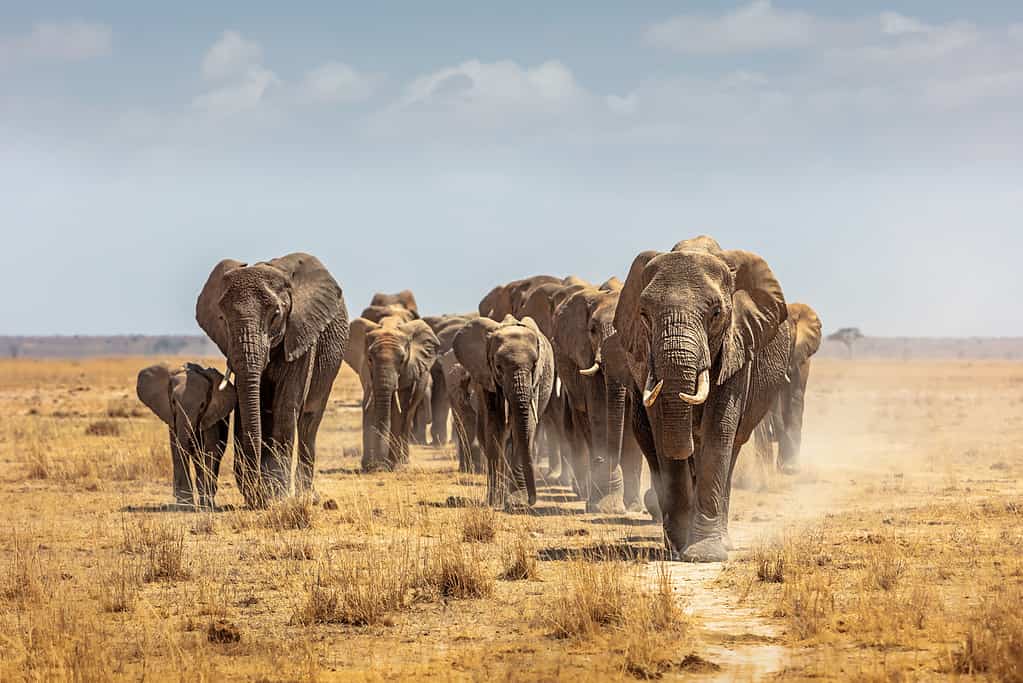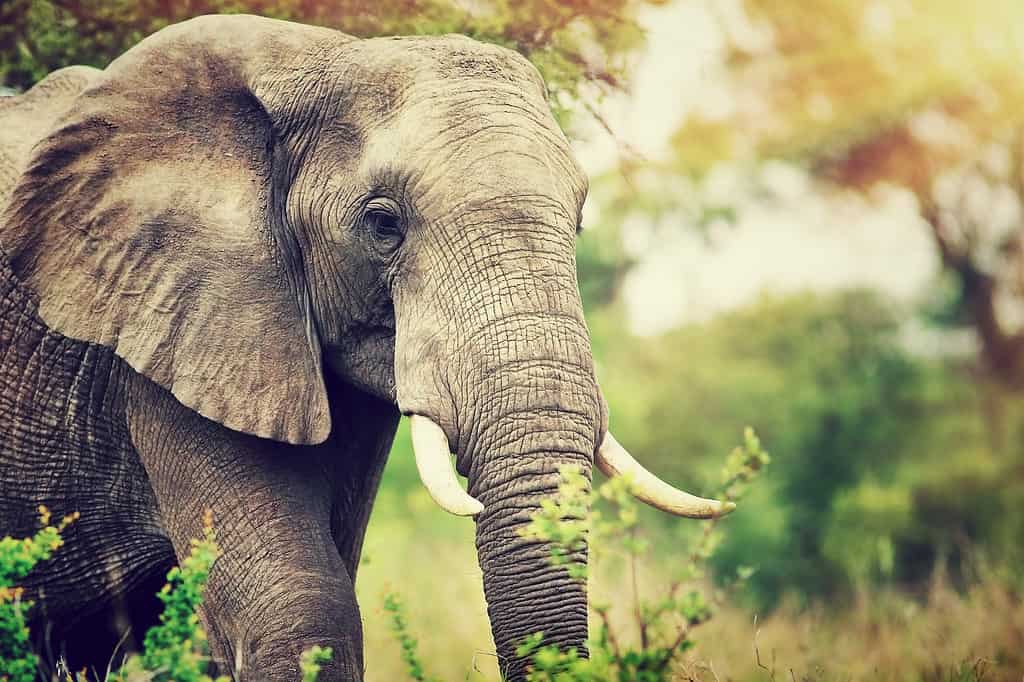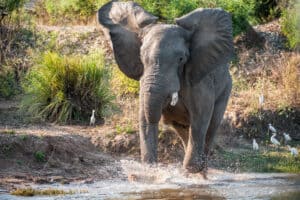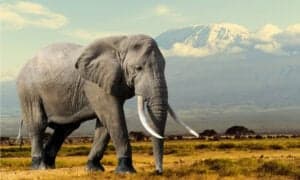Elephants are one of the big five, iconic animals that people sometimes travel thousands of miles to see. But have you ever wondered if elephants are endangered? Well, unfortunately, these huge animals — the largest land mammals in the world — are in a fight for survival. They face several threats, all of which contribute to a declining population. Keep reading as we learn more about the issues that these majestic animals face, as well as discover how many of them are left in the world.
Where Do Elephants Live?
There are three species of elephants — the African bush elephant, the African forest elephant, and the Asian elephant. African bush elephants are the largest species and inhabit sub-Saharan Africa across a variety of forests, grasslands, and wetlands. African forest elephants are smaller and inhabit rainforests in Central Africa, while Asian elephants are the smallest species and live in forests and grasslands across Asia.
Elephants live in herds which typically consist of between 10 and 70 individuals. These herds are matriarchal and are usually led by the oldest female. The females almost always remain in the same herd for life and herds often consist of several offspring from the same female. However, the males leave their herd of birth when they are around 12 to 15 years old to form smaller “bachelor herds”.
Elephants are a keystone species as they help to shape and maintain the ecosystem. This earns them the name “ecosystem engineers.” One of the ways that they help the ecosystem is by using their tusks to dig up dry riverbeds which creates new watering holes that numerous animals can benefit from. They also create new paths through forests with their bulky bodies which make areas more accessible to other animals.
How Many Elephants Are There in the World?

All three species of elephants are considered to be endangered on some level.
©adogslifephoto/iStock / Getty Images Plus via Getty Images
All three species of elephants are classified as endangered. African bush elephants and Asian elephants are considered to be endangered species, according to the IUCN Red List, but African forest elephants are critically endangered. Prior to 2021, both African species had been considered “Vulnerable” but declining populations led to the reclassification.
There are currently around 415,000 African elephants in the world (African bush and African forest combined), but there are only approximately 40,000 to 50,000 Asian elephants left. Reliable data about the true number of African forest elephants is difficult to come by due to their thick forest habitats, but estimates suggest that their population is around 150,000, meaning that the population of African bush elephants is around 265,000.
Check out the chart below for a breakdown of the figures.
| Species | Population |
|---|---|
| African bush elephant | 265,000 |
| African forest elephant | 150,000 |
| Asian elephant | 40,000 — 50,000 |
What Threats Do Elephants Face?
The populations of all species of elephants have declined significantly in recent years, and this is due to the number of serious threats that they face. Ivory hunting is the most well-known issue that elephants face, but other threats include habitat loss and the human-elephant conflict that arises as a result. Let’s take a more in-depth look at them.
Poaching

Illegal ivory hunting is one of the largest threats faced by elephants.
©Anna_Om/iStock via Getty Images
The main threat that elephants face is poaching. Up to 30,000 elephants are killed every year for their tusks, around 20,000 of them in Africa. Elephants are hunted and killed for their tusks which are made from ivory. The ivory is then smuggled to other countries, such as China and Hong Kong, where there are major markets for it. The elephants are also harvested for their meat, which is also usually sold for a profit.
Although most female Asian elephants don’t grow significant tusks, all Asian elephants are still at risk from poachers. This is because, as well as their meat and tusks, many Asian elephants are killed so that their body parts can be used in medicinal products or for jewelry. In many cases, both breeding females and their young calves are targeted. This results in an even greater risk to the population.
Habitat Loss
The other threat that elephants face is habitat loss, which is a particularly significant threat to Asian elephants. Human settlements and developing agricultural land are continually encroaching into the elephants’ habitats. They also block traditional migration routes with roads and fences. This effectively prevents the elephants from accessing the feeding grounds that they would typically travel to throughout the year. However, as well as destroying the elephants’ natural habitat, it also brings the elephants into much closer contact with humans.
As a result of being driven into a smaller area and the need to find food, elephants will sometimes destroy crops or even property, affecting the livelihoods of the people in the local community. When elephants do this humans often retaliate by killing them.
Can Anything Be Done to Save Them?

Steps are being taken to try to reduce conflict between elephants and humans and to stop the illegal ivory trade.
©JohnEGoodwin/Shutterstock.com
There are many organizations that are working hard to protect elephants and to give them a fighting chance at survival. For instance, the World Wildlife Fund is working to create new safe areas for elephants and to create anti-poaching initiatives. These initiatives include training new rangers to guard the elephants and to prevent the poachers from reaching them. However, they’re also working with other organizations to try to cut off the ivory trade by stopping the market for it and seizing illegal ivory products.
Other initiatives to protect the elephants include attempting to prevent the conflict between humans and elephants. This involves taking steps to address the unplanned development of the elephant’s habitat to try and prevent any more loss. It also includes implementing deterrents such as electric fencing to prevent the elephants from reaching human areas.
The photo featured at the top of this post is © Johan Swanepoel/iStock via Getty Images
Thank you for reading! Have some feedback for us? Contact the AZ Animals editorial team.






